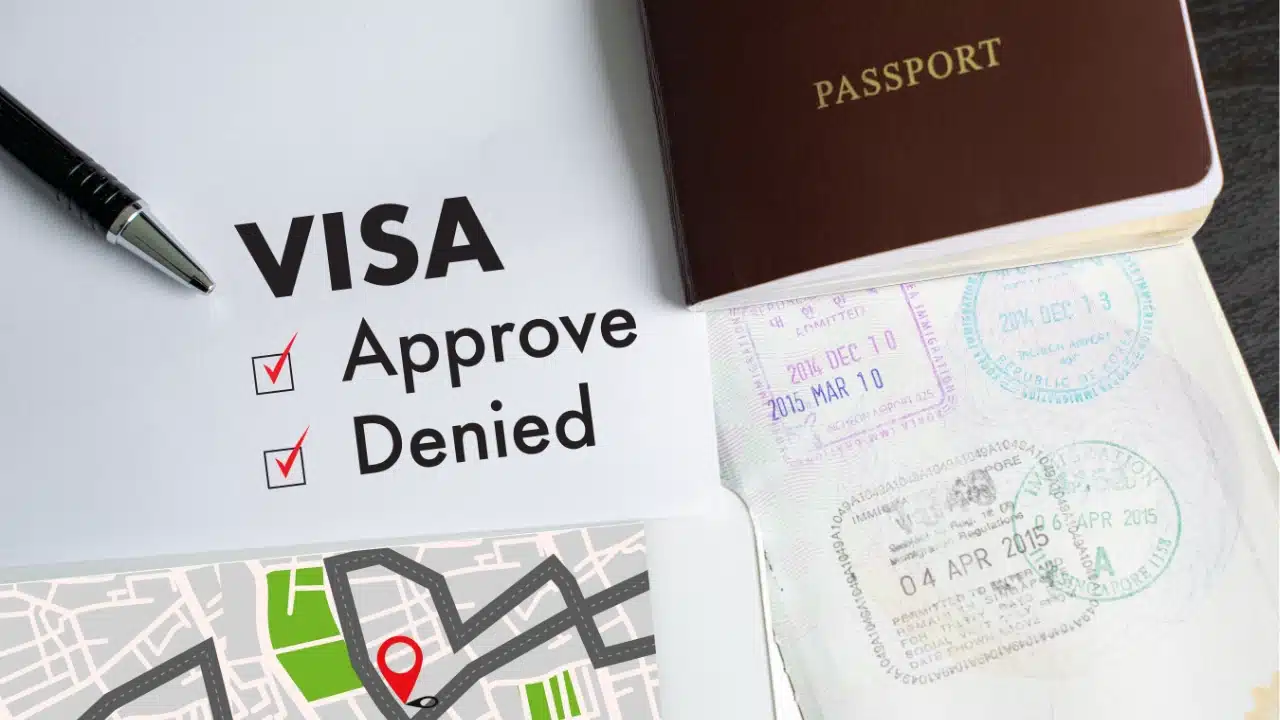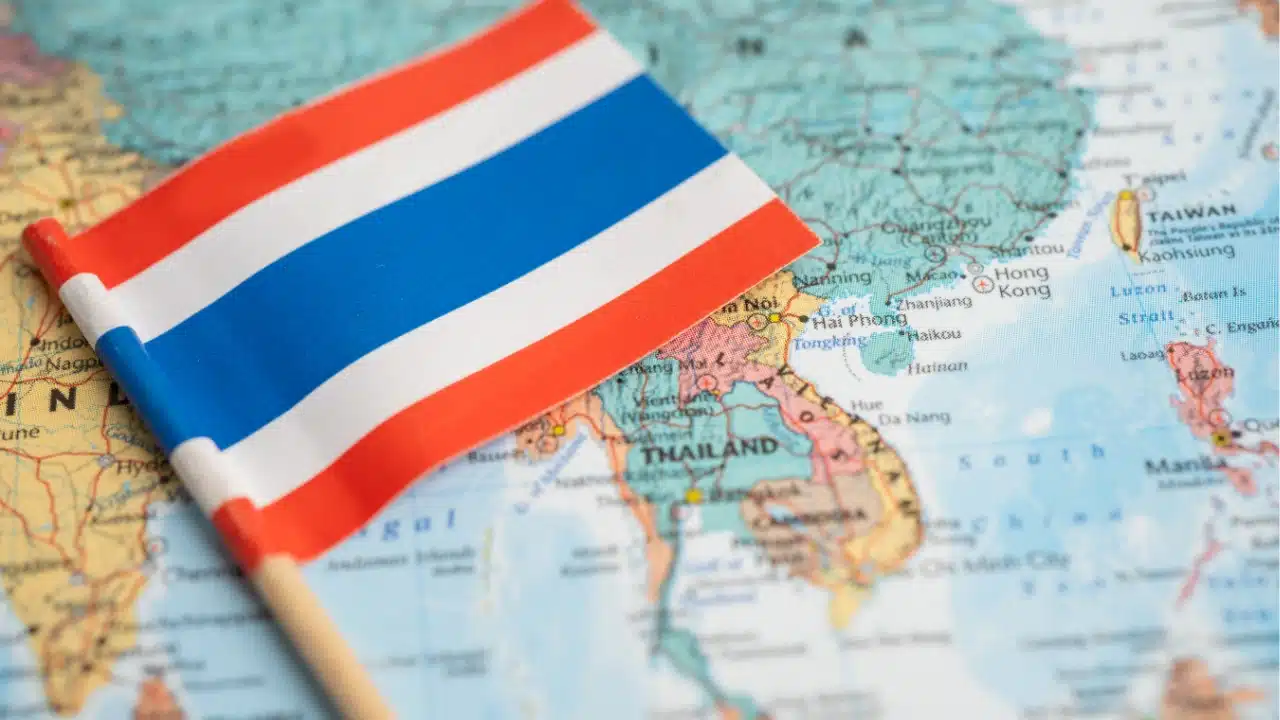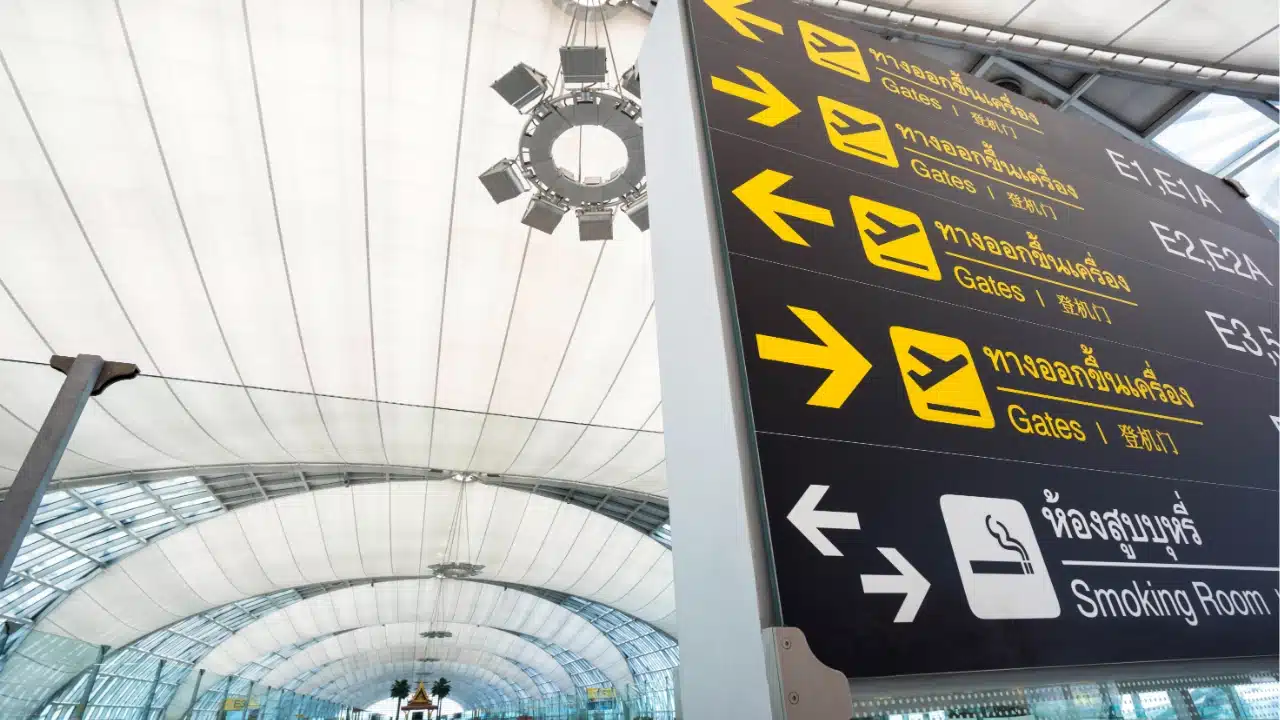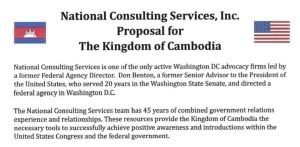Everything you need to know about E-Visa in Thailand
Another way to enter The Kingdom with convenience

Travelling to Thailand will be easier with the new Thai E-visa system. From January 1, people from almost any country can apply for a visa online. You don’t need to visit an embassy or consulate anymore. The process is fast, simple, and all done through a website. In this guide, we’ll cover everything you need to know about the Thailand E-Visa, including eligibility, application steps, required documents, visa types, processing time, fees, and helpful tips and tools to ensure a smooth journey.
On this page
| Topic (jump to section) | Description |
|---|---|
| What is the Thailand E-Visa? | The Thailand E-Visa is an online visa application system, making it easier for travellers to visit without needing to visit an embassy. |
| Who needs an E-Visa? | Travellers from certain countries need to apply for the E-Visa before arriving. Check your nationality to see if you’re eligible. |
| Types of E-Visas available | Thailand offers various E-Visas, including tourist, business, transit, SMART, LTR, and Destination Thailand visas. |
| Required documents | Documents typically include a valid passport, passport photo, travel itinerary, and proof of funds, depending on the visa type. |
| How to apply for an E-Visa | Fill out an online form, upload documents, and pay the fee. You will receive your E-Visa by email. |
| Processing time and fees | The process takes about 10 to 14 working days and costs between 1,000 and 6,000 Thai Baht, depending on visa type and nationality. |
| Validity and extensions | Tourist visas are valid for 60 days, and they are extendable to 30 more days. Non-immigrant visas usually last 90 days, with possible extensions. |
| Arrival and immigration process | Upon arrival, present your E-Visa, passport, and other documents. Immigration will stamp your passport for the allowed stay period. |
| Health insurance and safety | While not mandatory, health insurance is highly recommended. Long-stay visa holders must show proof of insurance that meets specific requirements. |
| Common mistakes to avoid | Ensure your passport is valid, upload clear documents, and check for any errors in your application to avoid delays. |
| Cigna support for long-stay travellers | Cigna offers comprehensive health insurance for long-stay travellers, expats, and retirees in Thailand, meeting visa requirements. |
What is the Thailand E-Visa?

The Thailand E-Visa is a new online visa system that makes it easier for people around the world to visit Thailand. This visa has been open since January 1 of this year, and travellers can apply for a Thai visa online at www.thaievisa.go.th, without going to an embassy or consulate.
The process is simple. You fill out an online form, upload your documents, and pay the fee—all from your computer or phone. It’s faster, with less paperwork, and works well for tourists, business visitors, students, and people staying long-term, like retirees.
Once approved, you’ll receive your visa by email. This makes planning your trip smoother and more convenient. The E-Visa system also helps speed up processing and reduces long waits at Thai embassies, making Thailand easier to visit for everyone.
Who needs an E-Visa?

Not everyone needs an E-visa to enter Thailand. It depends on your nationality and how long you plan to stay.
Thailand allows citizens from 93 countries to enter without a visa for up to 60 days. This includes travellers from the United States, the United Kingdom, Australia, most European countries, and more. If you’re from one of these countries and plan a short visit, you don’t need an E-visa. You can also apply for a 30-day extension if you decide to stay longer while in Thailand.
But if you’re from a country that is not on the visa exemption or visa-on-arrival list, you must apply for an e-visa before your trip. The entire process is done online.
Even if you are from a visa-exempt country, you’ll need an E-visa if your stay goes beyond the allowed period.
Thailand also plans to introduce an Electronic Travel Authorisation (ETA) system in 2025. This will apply to visa-exempt travellers and will be a separate step to complete before travelling.
For these types of tourists or travellers who are entering Thailand, it is essential to have a flexible insurance plan that allows you to travel without too much concern for health issues, so it would be a perfect opportunity to look into Cigna.
Types of E-Visas available
Thailand offers several types of E-Visas in 2025 to match different travel needs. Whether you’re visiting for a short holiday or planning a long stay, there’s a visa that fits your purpose. You can apply for all of these online through the official E-Visa website.
Here are the main types of E-Visas available:
1. Tourist Visa (TR)
This visa is for people coming to Thailand for a holiday, sightseeing, or medical treatment. You can get a single- or multiple-entry visa. Each entry lets you stay up to 60 days, and you can extend your stay for 30 more days. You cannot work with this visa.
2. Non-Immigrant Visa
This type includes several categories for different purposes:
- Business (Non-B)
- Education (Non-ED)
- Retirement (Non-OA)
- Family visits, volunteering, and other long-term stays
Most non-immigrant visas allow you to stay for 90 days per entry and may offer single or multiple entries depending on the reason.
3. Transit Visa (TS)
If you’re just passing through Thailand on your way to another country, this short-stay visa lets you stay up to 30 days.
4. SMART Visa
This is for professionals, investors, executives, or startup founders in industries like tech or healthcare. The SMART Visa allows stays of up to 4 years and includes extra benefits like not needing a work permit.
5. Long-Term Resident Visa (LTR)
This visa suits digital nomads, investors, skilled workers, and retirees. It offers a 10-year stay, lower income tax, and simpler immigration reporting.
6. Destination Thailand Visa (DTV)
The DTV is designed for people like digital nomads. It allows multiple entries, with each visit lasting up to 180 days. The visa is valid for 5 years.
Each visa type has its own rules, fees, and required documents. Thailand’s E-Visa options give travellers more flexibility and make it easier to choose the right visa for their stay this year.
Required documents

To apply for a Thai E-Visa, prepare these key documents. The list may vary depending on your visa type, but most travellers will need the following:
- Passport: Must be valid for at least 6 months from your entry date and have at least 2 blank pages.
- Passport photo: Recent photo taken within the last 6 months, in JPG or JPEG format, meeting size rules.
- Travel itinerary: Flight details showing your entry and exit dates from Thailand.
- Proof of accommodation: Hotel booking, rental contract, or a letter if staying with friends or family.
- Proof of funds: Recent bank statements showing at least 10,000 THB for single travellers or 20,000 THB for families.
- Letter of invitation or supporting documents: Needed for business, study, or family visits—this can include letters from a Thai company, school, or family member.
- Online application form: You need to fill out your personal and travel details correctly on the E-Visa website.
- Extra documents for minors: For travellers under 20, include a birth certificate and parents’ marriage or custody documents.
How to apply for an E-Visa

Applying for a Thai E-Visa is easy and can be done completely online. Follow these simple steps to get started:
- Go to the official website: Visit www.thaievisa.go.th. This is the only official site for applying for a Thai E-Visa.
- Create an account: Sign up using your email address. You’ll get a link by email to activate your account.
- Choose your visa type: Select the visa that matches your reason for travel, such as tourism, business, study, or transit.
- Fill out the application form: Enter your personal details, travel plans, and contact information. Make sure all information is correct.
- Upload your documents: Attach clear digital copies of your passport, recent photo, travel plans, hotel booking, and any extra papers required for your visa type.
- Pay the visa fee: Use the online system to pay the fee. The cost depends on your visa type and nationality.
- Wait for approval: You’ll get updates by email. Once approved, your e-visa will be sent to your inbox.
- Print your E-Visa: Print out a hard copy of your visa. You’ll need to show this printed version when checking in for your flight and when you arrive in Thailand. Phone or digital copies are not accepted.
With this simple online process, you don’t need to visit a Thai embassy or consulate. It saves time and makes getting your Thai visa faster and more convenient.
Processing time and fees

When applying for a Thai E-Visa, it’s important to know how long it takes and how much it costs.
Processing time
Most Thai E-Visas are approved within 10 to 14 working days after you pay the fee. In some cases, it may take as little as 3 days or as long as 15 business days, depending on your visa type and nationality. Delays can happen if there are many applications, so it’s best to apply early.
Visa fees
The visa fee depends on your nationality and the type of visa you choose. In general, it ranges from 1,000 to 6,000 Thai Baht. You will usually pay the fee online during the application.
However, in some countries, like Myanmar, online payment is not available. In these cases, you must go to the Thai embassy and pay in person.
Important note
Visa fees are non-refundable, even if your application is denied. So, make sure all your information and documents are correct before submitting.
To avoid any issues, apply early, check your visa type, and be ready to pay the correct fee. This helps ensure a smooth E-Visa process for your trip to Thailand.
Validity and extensions

Thailand’s E-Visa system gives travellers flexible options to stay longer, depending on the visa type.
Tourist E-Visa
A single-entry tourist visa lets you stay in Thailand for 60 days. You can extend it for 30 more days at a Thai immigration office, giving you a total stay of up to 90 days.
If you have a multiple-entry tourist visa, it is valid for 6 months. You can enter Thailand as many times as you want during that period. Each entry allows a 60-day stay, and you can also extend each visit by 30 days.
Non-Immigrant Visas
Visas for business, education, retirement, or family visits usually allow an initial stay of 90 days. Depending on the visa type, you may be able to extend your stay for a longer period.
How to extend your visa
You can request an extension at a Thai immigration office. Many visa types, including tourist and non-immigrant, can now be extended through Thailand’s online “e-Extension” system. This system lets you upload documents and pay the fee online. After that, you visit the immigration office for final approval and stamping.
Arrival and immigration process

When you arrive in Thailand with an E-Visa, the entry process is simple but must be followed carefully. Before your trip, all non-Thai travellers must complete the Thailand Digital Arrival Card (TDAC) online. This step is required within 3 days before your arrival, starting May 1. It applies to all travellers arriving by plane, land, or sea.
At the airport, make sure you have these documents ready:
- A printed copy of your approved E-Visa
- Your valid passport
- Return ticket and proof of accommodation, in case immigration officers ask for them
Immigration officers will check your documents and stamp your passport. The stamp will match the number of days allowed by your visa type.
The TDAC replaces the old paper TM6 form and helps speed up your entry while keeping things secure.
Health insurance and safety

Having travel health insurance is not always required for visitors to Thailand, but it is strongly recommended. Medical care in Thailand, especially at private hospitals, can be expensive, especially in emergencies or for hospital stays. Public hospitals are more affordable but may have long wait times and limited English-speaking staff.
Who should have health insurance?
- Tourists on short stays don’t need health insurance by law, but it’s a smart idea to have it in case of accidents or illness.
- Long-stay visa holders—like retirees or those with Non-Immigrant O-A or O-X visas—must show proof of health insurance. The insurance must meet the required coverage levels and is often from approved Thai providers.
- Expats who are not part of the Thai public healthcare system need private health insurance to use most medical services.
Why it matters
Good health insurance protects you from unexpected bills and gives you peace of mind while you’re in Thailand. Companies like Cigna Global offer flexible plans for tourists, digital nomads, and retirees, so you’re covered whether it’s a quick check-up or emergency care.
Common mistakes to avoid

- Blurry or wrong documents: Make sure all uploads are clear, sharp, and easy to read. Blurry or incomplete files can delay or block your application.
- Passport close to expiry: Your passport must be valid for at least 6 months from your arrival date. Renew it first if needed.
- Wrong personal details: Always enter your full name and information exactly as shown in your passport. Avoid typos, special characters, or autofill errors.
- Booking flights too early: Wait for visa approval before buying non-refundable tickets to avoid losing money if there’s a delay.
- Missing important emails: Visa updates are sent by email. Check your inbox and spam folders often to avoid missing your approval.
- Ignoring visa rules: Each visa type has its own requirements. Some need extra documents like bank statements, hotel bookings, or invitation letters. Read the rules carefully before you apply.
By avoiding these mistakes and following the correct steps, your Thai E-Visa process will go much more smoothly.
Cigna support for long-stay travellers

Staying in Thailand long-term? Cigna is the top pick for expats, retirees, and digital nomads. It’s visa-approved, easy to apply for, and trusted worldwide.
Get covered for hospital stays, emergencies, and more—with 24/7 support and flexible plans to fit your budget.
Simple, reliable, and made for Thailand—choose Cigna.
Travelling to Thailand is now easier with the new Thai E-Visa system. You can apply online from almost any country, without going to an embassy. There are different visa types for tourists, business visitors, students, retirees, and more—each with its own rules, stay periods, and fees. Make sure you prepare the right documents, apply early, and follow the steps carefully. While health insurance is not always required, it’s strongly recommended, especially for long-stay travellers. Providers like Cigna offer plans that meet visa rules and give you peace of mind during your stay. To learn about the Thailand Digital Arrival Card (TDAC), which you need to complete before arriving, check out our full guide: An overview of the Thailand Digital Arrival Card.
Lock in a 10% lifetime discount with Cigna on your expat health plan for life
T&Cs apply*
*Cigna Healthcare reserves the right to amend or withdraw a promotion at any time without notice. This discount will apply for the lifetime of the policy and is only eligible to new Cigna Global Individual customers. The discount may only be applied by a sales agent and cannot be applied in conjunction with any other offer, except the 10% discount given to policies paid annually in full. If you choose to pay your policy annually in full, your 10% discount will be applied after the 10% annual discount has been applied. Only Cigna Global Individual Policies are eligible for the 10% discount. A minimum purchase value of $2000 for policies based in Europe is applicable. Policies based in the rest of the world require a minimum purchase value of $3000 to be eligible.
Sponsored
Latest Thailand News
Follow The Thaiger on Google News:


























